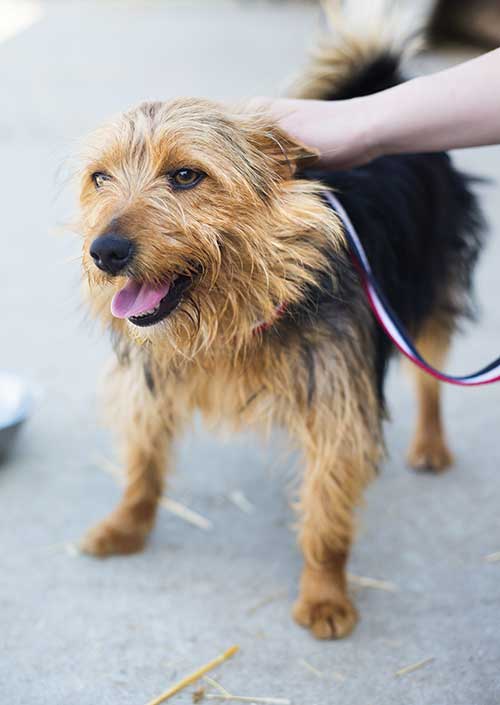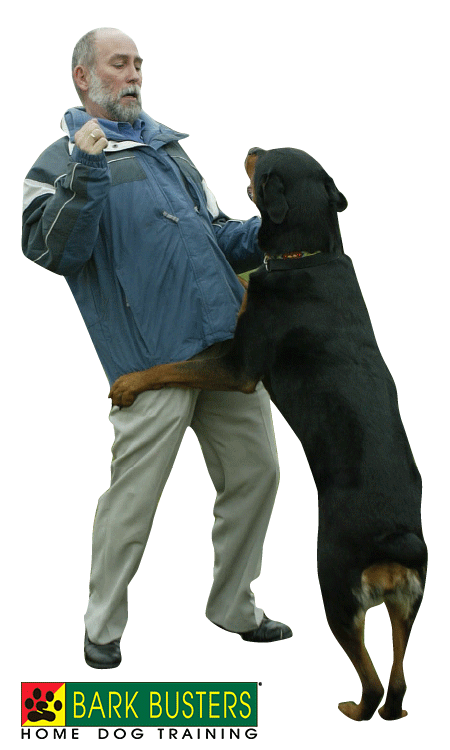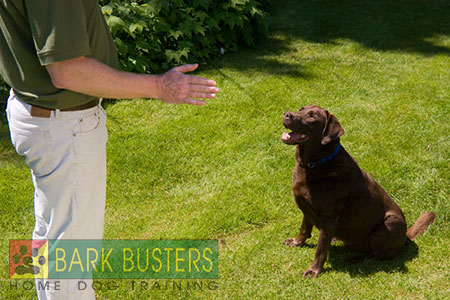Christmas: Keeping your dog safe
 Christmas is fast approaching again, so we would like to remind you of some important things to consider when preparing for the Festive Season with your dog.
Christmas is fast approaching again, so we would like to remind you of some important things to consider when preparing for the Festive Season with your dog.
Foods
Many dried fruits are poisonous to dogs so don’t allow them access to grapes, the cheeseboard, or any Christmas cake, Christmas pudding or mince pies.
Your Christmas dinner and the lovely big turkey that has been roasting all morning will be very tempting to your dog, but be careful about allowing him to partake in this meal. Onions, including leeks, and onion powder that may be found in stuffing mixes, can cause liver damage or a rare form of anaemia in dogs. This applies to both cooked and raw onions and leeks. Additionally, gravy can be very fatty, salty and too rich for your dog, so keep him away from the gravy boat and don’t allow him to lick your plates clean!
Salt can be dangerous to dogs as they cannot process excess quantities. Especially in an older dog, too much salt can cause kidney damage. So please watch out for the bowls of salted treats and make sure they aren’t easily accessible for your dog.
At Christmas, there will be quantities of sweets and chocolate around your house. Chocolate is very tempting for dogs but it can be a lethal temptation for them! Symptoms of chocolate poisoning include hyper-excitability, vomiting, frequent urination, diarrhoea, rapid breathing, weakness and seizures. If you discover that your dog has eaten chocolate and is displaying these symptoms, contact your vet immediately. Store chocolate well out of the way of your dog, and make his Christmas treats be something more natural for dogs. Also, discarded sweet wrappers can be very tempting too. Sweet wrappers can get trapped in the stomach and digestive system making for a very sick dog, and the need for an operation to remove them.
Never be tempted to feed your dog the cooked bone from a joint or the cooked carcass of a roasted bird. Cooked bones can cause internal damage as they splinter.
Alcohol
Make sure alcoholic drinks are out of the way of your dog. Your dog may be tempted to sample the contents of a glass left on the floor or a low coffee table.
Please be mindful that, if you are drunk, your dog may not recognise you instantly as he normally does. He may be fearful of you and back away or growl at you. Try to keep your voice calm and neutral, don’t rush to touch him, and allow him to work out that it's really you.
Decorations
Please do ensure that Christmas decorations are out of reach of your dog, especially a puppy who will be interested to sample the delights of tinsel, baubles and Christmas tree lights. Also, if you’re in the process of toilet training a puppy using paper in the house, don’t leave wrapped presents under the tree as it is likely that the puppy will use them as a toilet. Don’t reprimand your puppy for mistakes like this…he is learning.
Presents
Please ensure that any small parts of toys, and any batteries are always out of the reach of your dog. If he swallows a battery, please seek veterinary advice. If you are going to buy presents for your dog, please ensure that they are toys manufactured specifically for dogs. Buy dog toys from a reputable pet shop or manufacturer and go for quality rather than quantity.
Visitors
Dogs often love visitors and all the extra attention they bring. However, please ensure that your dog doesn’t become overwhelmed with attention. Particularly watch his interaction with children, and create a safe space for your dog to retreat to if things become too much. Don’t allow anyone to approach your dog once he has gone to his safe space. You may have to be firm with visitors, but you are responsible for the well-being of your dog, and you need to be sure that he won’t be pushed to his limits. Also, if you are holding a party, ensure that alcoholic drinks and party food are not left lying on the floor where your dog can help himself…you could end up with a very poorly pooch! Very often, dogs do not appreciate loud music so be mindful of this and allow him to go to his safe space, or turn the music down.
Fireworks
Please think twice before letting off fireworks to celebrate Christmas. Fireworks are one of the main complaints we hear from dog owners; they can cause extreme anxiety to dogs as they don’t understand the loud bangs. Doing without the fireworks will be appreciated by both your dog and those that live in the area.
If you prepare yourself, and try to view the Christmas wonderland of your home through your dog’s eyes, we are sure that you will be able to enjoy a safe and happy Christmas with your pet.

 As we all know, if you are a dog lover, owning a dog can be great fun and rewarding for all members of the family. However, the joy of owning a dog also brings with it a commitment from you that will last around 12 years or even longer. During that time, you will face challenges, frustrations and financial demands that may put a strain on your pockets, your relationship with your dog, and sometimes even your relationship with other members of your household!
As we all know, if you are a dog lover, owning a dog can be great fun and rewarding for all members of the family. However, the joy of owning a dog also brings with it a commitment from you that will last around 12 years or even longer. During that time, you will face challenges, frustrations and financial demands that may put a strain on your pockets, your relationship with your dog, and sometimes even your relationship with other members of your household! It’s that time of year again! Christmas is fast approaching, and the season for after-work drinks, get-togethers and parties is about to begin. Obviously, we all want to enjoy this time of year; but do spare a thought for your four-legged friends as they don’t understand the changes that may occur in your routine and your behaviour. We’ve put together some advice for you to ensure that you keep your dog safe, comfortable and happy during your seasonal celebrations.
It’s that time of year again! Christmas is fast approaching, and the season for after-work drinks, get-togethers and parties is about to begin. Obviously, we all want to enjoy this time of year; but do spare a thought for your four-legged friends as they don’t understand the changes that may occur in your routine and your behaviour. We’ve put together some advice for you to ensure that you keep your dog safe, comfortable and happy during your seasonal celebrations.
 If you are a dog lover, which you probably are if you are taking the time to read this article, you will enjoy greeting new dogs you meet whilst out and about. However, attempting to greet a dog in an inappropriate manner could cause you all sorts of problems, and could also put you, the dog, and the owner at risk.
If you are a dog lover, which you probably are if you are taking the time to read this article, you will enjoy greeting new dogs you meet whilst out and about. However, attempting to greet a dog in an inappropriate manner could cause you all sorts of problems, and could also put you, the dog, and the owner at risk. One of the common calls we get is for help where two (or more) dogs living in the same household have started to fight. We call this sibling rivalry. Many owners never experience this but, for those who do, it can be very distressing. Not only can it be dangerous for the owners when they try to break up fights, once sibling rivalry becomes extreme, owners may be left with no option but to rehome one of their dogs.
One of the common calls we get is for help where two (or more) dogs living in the same household have started to fight. We call this sibling rivalry. Many owners never experience this but, for those who do, it can be very distressing. Not only can it be dangerous for the owners when they try to break up fights, once sibling rivalry becomes extreme, owners may be left with no option but to rehome one of their dogs. As Bark Busters trainers, one of the most common things we hear from dog owners is "My dog doesn't listen to me".
As Bark Busters trainers, one of the most common things we hear from dog owners is "My dog doesn't listen to me". Bonfire night takes place traditionally on 5th November but, as we all know, nowadays, fireworks can be seen and heard for weeks before and after that date. Whilst fireworks are attractive and exciting for humans, dogs generally are far less keen and are unable to make sense of the loud bangs and explosions taking place in their normally quiet lives.
Bonfire night takes place traditionally on 5th November but, as we all know, nowadays, fireworks can be seen and heard for weeks before and after that date. Whilst fireworks are attractive and exciting for humans, dogs generally are far less keen and are unable to make sense of the loud bangs and explosions taking place in their normally quiet lives.
 We often get called to see dogs who are in the habit of jumping up at people. It may be that they jump up at their owner, or visitors, or anyone they pass in the street! It’s a behaviour that can be, at best, embarrassing for the owner or, at worst, putting the owner at risk of criminal charges and an expensive fine.
We often get called to see dogs who are in the habit of jumping up at people. It may be that they jump up at their owner, or visitors, or anyone they pass in the street! It’s a behaviour that can be, at best, embarrassing for the owner or, at worst, putting the owner at risk of criminal charges and an expensive fine. Dogs are with us for just a short period of our lives and yet, during that time, they become a major part of our family. Many people would describe the attachment they feel towards their dog as just as strong, if not stronger, than that felt towards some human relatives. So when it is time for our beloved pet to leave us and cross over the "Rainbow Bridge", the sense of grief and loss can be overwhelming. What is worse, many other people, those you work with or those you know socially who have never owned a dog and never experienced that particular bond of love and affection, simply cannot comprehend the depth of your grief.
Dogs are with us for just a short period of our lives and yet, during that time, they become a major part of our family. Many people would describe the attachment they feel towards their dog as just as strong, if not stronger, than that felt towards some human relatives. So when it is time for our beloved pet to leave us and cross over the "Rainbow Bridge", the sense of grief and loss can be overwhelming. What is worse, many other people, those you work with or those you know socially who have never owned a dog and never experienced that particular bond of love and affection, simply cannot comprehend the depth of your grief. If you have decided that the time is right to add a new dog to your family, you will probably be feeling really excited to introduce the new addition to the rest of the family. There will be reasons why you felt that this was the right dog for your family…right age, right size, right temperament, good with children, good with other dogs etc., so you are confident that this new dog will easily slot in to your family group.
If you have decided that the time is right to add a new dog to your family, you will probably be feeling really excited to introduce the new addition to the rest of the family. There will be reasons why you felt that this was the right dog for your family…right age, right size, right temperament, good with children, good with other dogs etc., so you are confident that this new dog will easily slot in to your family group. Dog bite prevention week takes place on the third week of May annually and aims to educate people in how to avoid being bitten by a dog. It's a sad fact that dog bites, in the UK, increase more and more each year. Over the past 10 years, dog bites have increased by over 40%. The latest NHS figures appear to show that there has been an increase of over 6% on 2014 compared to 2013*.
Dog bite prevention week takes place on the third week of May annually and aims to educate people in how to avoid being bitten by a dog. It's a sad fact that dog bites, in the UK, increase more and more each year. Over the past 10 years, dog bites have increased by over 40%. The latest NHS figures appear to show that there has been an increase of over 6% on 2014 compared to 2013*. Now that we have made it through Easter, the days are getting longer, and the fields, hedgerows and gardens are bursting into life, no doubt you can hardly wait to get out and explore the countryside with your dog. So we thought we would put together some tips and advice to help you and your dog stay safe and healthy this Springtime.
Now that we have made it through Easter, the days are getting longer, and the fields, hedgerows and gardens are bursting into life, no doubt you can hardly wait to get out and explore the countryside with your dog. So we thought we would put together some tips and advice to help you and your dog stay safe and healthy this Springtime.